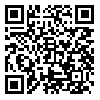BibTeX | RIS | EndNote | Medlars | ProCite | Reference Manager | RefWorks
Send citation to:
URL: http://journal.zums.ac.ir/article-1-2778-en.html
2- Dept. of Biology, Faculty of Sciences, University of Arak, Arak, Iran ,
Background and Objective: Breast cancer is the most common cancer among women worldwide. Saffron is one of the most well-known plants as an antioxidant and anticancer. The aim of this study was to assess the impact of saffron on the viability of breast cancer cells and simultaneous interaction effect of Paclitaxel drug. Materials and Methods: In this study, saffron extract (Crocus sativus L.) was prepared by Soxhlet method. Breast cancer cells (4T1) were prepared from the Pasteur cell bank then passaged several times until the required number of cells obtained. Cytotoxicity of Paclitaxel and the extracts of saffron were assessed separately and simultaneously using colorimetric MTT assay and trypan Blue test with certain concentrations of drug and extracts in the treatment period of 48 and 72 h. Then, the rate of apoptogenic changes in each compound was evaluated by Hoechst and PI methods. Results: Data from 48 and 72 h treatment of extract of Crocus sativus showed antitumor effects on breast cancer cells. These effects were dose and time dependent. The synergistic effects in 48 hour treatment indicated a significant increase in cytotoxicity of saffron/Paclitaxel (P <0.05). Conclusion: The results showed that ethanol and aqueous extract of saffron and Paclitaxel have significant anticancer properties against breast cancer cells. It was also found that the aqueous and ethanol extracts of saffron can considerably increase cytotoxicity in cancer cells induced by Paclitaxel while the aqueous extract of saffron showed better results. Referenses 1- Abdullaev Fl. Cancer chemoperventive and tumoricidal properties of saffron. Biol Med. 2002 227: 20-25. 2- Eisenberg D, Kessler R. Saffron redgold of brackish. Tehran Agricultural Information Bank. 1995. 3- Akhondzadeh S, Tahmacebi-Pour N, Noorbalaa A, et al. Crocus sativus L. In the treatment of mild to moderate depression: a double-blind, randomized and placebo controlled trial. Phytother Res. 2005 19(2): 148-51. 4- Sabzevari M. Unconventional medicine in United Statesprevalence, cost and pattern of use. N Engl Jmed 1993 328: 52-246. 5- Ampasavate C, Okonogi S, Anuchapreeda S. Cytotoxicity of extracts from fruit plants against leukemic cell lines. African J Pharmacy Pharmacol. 2010l 4(1): 13-21. 6- Okouneva T, Hillb T, The effects of vinflunine and vinblastin on centromere dynamis. Cancer. 2003 2(5): 427-36. 7- Gutheil W, Reed G, Ray A, Dhar A. Crocetin: an agent derived from saffron for prevention and therapy for cancer. Curr Pharm Biotechnol. 2012 13(1): 173-9. 8- Verdianrizi M,Hageakhondi A , Hamedani M,et al.Sepration of taxuspinanane G from (Taxus baccata L.). Plantpharmacology. 2010 4: 120-4. 9- Stephanie V, Paul Ch, John P, Noah G, Carolyn D. Erlotinib added to carboplatin and paclitaxel as first-line treatment of ovarian cancer:A phase II study based on surgical reassessment.Gynecologic Oncology. 2010 119: 451-6. 10- Chryssanthi D, Lamari F, Iatrou G, Pylara A, Karamanos N, Cordopatis P. Inhibition ofbreast cancer cell proliferation by style constituents of different crocus species. Anticancer Res. 2007 27: 357-62. 11- Samarghandian S, Boskabadi MH, Davoodi S. Use of in vitro assays to assess the potential antiproliferative and cytotoxic effects of saffron (Crocus sativus L.) in human lung cancer cell line. Pharmacognosy Magazine. 2010 6(24): 309-14. 12- Tavakkol-Afshari J, Brook A , Mousavi SH. Study of cytotoxic and apoptogenic properties of saffron extract in human cancer cell lines. Food Chem. Toxicol. 2008 46: 3443-7. 13- Mark A, Marcus A, Jairo O, et al. Phase II trial of paclitaxel, ifosfamide, and carboplatin in extensivestagesmall cell lung cancer. Lung Cancer. 2003 40: 91-7. 14- Chakrabarty R, Das I. Saffron can prevent chemically induced skin carcinogenesis in swiss albino mice. Asian Pac J. 2004 5(1): 70-6. 15- Escribano J, Alonso G, Coca-Prados M, Fernandes J. Crocin safranal and picrocrocin from saffron inhibit the growth of human cancer cells in vitro. Cancer Letters Jurnal.1996 100(1): 23-30. 16- Tavakol-Afshari J, Rakhshandeh H, Brook A, Shahrokh abadi Kh. Study of cytutocity Saffron extract on carcinoma cell lines(HepG2). Azad Islamic University Jurnal. 2010 19(3): 154-9. 17- Mousavi S, Tavakol-Afshari J, Brook A, Jafari I. Role of caspases and Bax protein in Saffron-induced apoptosis in MCF-7 cells. Food & Chemical Toxicology. 2009 47: 1909-13. 18- Abdullaev F, Macvicar C, Frenkel G. Inhibition by selenium of DNA and RNA synthesis in normal and malignant cells in vitro. Cancer Lett. 1994 139: 43-49. 19- Mousavi S, Moallem SA, Mehri S, Shahsavand S. Improvement of cytotoxic and apoptogenic properties of crocin in cancer cell lines by its nanoliposomal form. Cancer. 2011 49(10): 1039-45. 20- Chang F, Li L, Wu C, Liu T, Peng F. Paclitaxel induced apoptosis in human gastric carcinoma cell lines. Cancer. 1996 77(1): 8-14. 21- Ashrafi M, Taghikhani M, Moosavi-Movahedi A. The effect of carotenoids obtained from saffron on histone H1 structure and H1–DNA interaction. International Journal of Biological Macromolecules. 2005 36(4): 246-52. 22- Ganeyan Z, Hosseinzadeh H. Effectes of saffronon polymerytion microtubule inbreast cancer cell line. Iran danesh. 2010 4(1): 31-9. 23- Abdullaev FI. Cancer chemopreventive andtumoricidal properties of saffron (crocus sativusL.). Exp Biol Med. 2005 227: 20-5. 24- Premkumar K, Thirunavukkarasu C, AbrahamSK, Santhiya ST, Ramesh A. Protective effect of saffron (Crocus sativus L.) aqueous extract against genetic damage induced by anti-tumor agents in mice. Hum Exp Toxicol. 2006 25: 79-84. 25- Hosseinzadeh H, Sadeghnia HR. Effect of safranal, a constituent of crocus sativus (saffron), on methyl methanesulfonate (MMS)-induced DNAdamage in mouse organs: An alkaline single-cell gel electrophoresis (comet) assay. DNA and Cell Biol. 2007 26 (12): 841-6.
Received: 2014/08/28 | Accepted: 2014/08/28 | Published: 2014/08/28
| Rights and permissions | |
 |
This work is licensed under a Creative Commons Attribution-NonCommercial 4.0 International License. |




